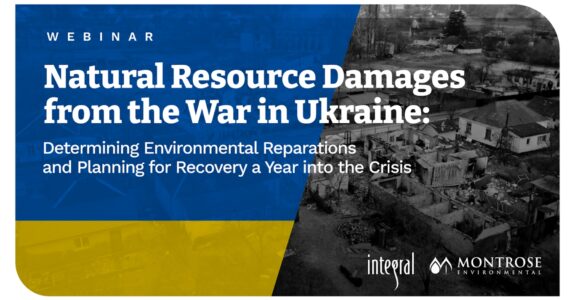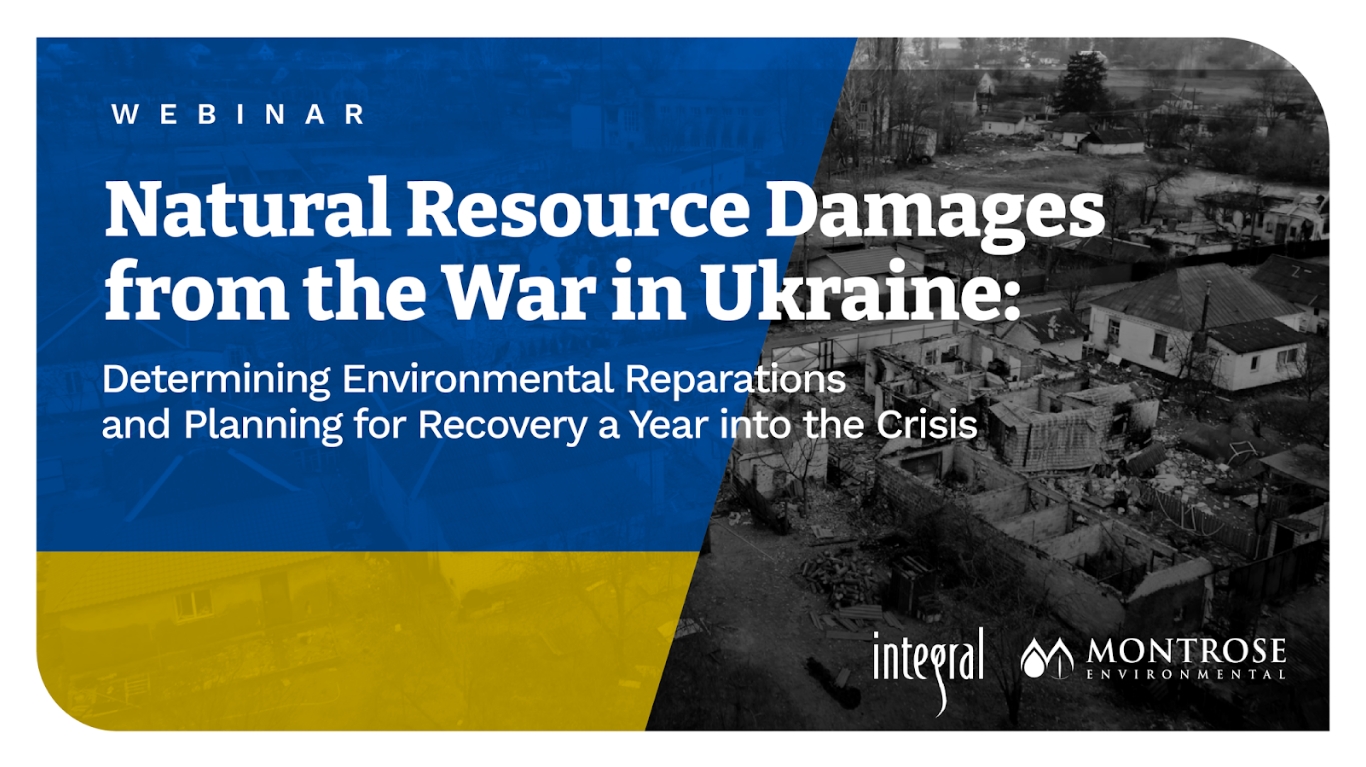
How do you quantify Natural Resource Damage Assessments?
August 7, 2023
By: Richard Wenning, PhD and Ted Tomasi, PhD
What type of math is used to quantify assessments?
Quantitative analyses typically used to support a damage assessment will differ depending on the resources potentially at risk, the types of injuries, and the quantification of injury versus the determination of damages as either a monetary value or cost of restoration. In all cases, the preference is to use quantitative methods because the goal is to develop a transparent, defensible, and precise (to the extent practicable) estimation of damages. To this end, both aspects of a damage assessment framework – injury determination and damage calculation – are concerned with the collection, organization, analysis, interpretation, and presentation of site-specific information.
A key consideration in the injury assessment is causality. Experimental (e.g., bioassays) or quasi-experimental (e.g., comparisons to unaffected reference areas) designs and appropriate statistical methods are needed. A best case is the availability of information before and after the effects and across affected and unaffected resource units. A second key issue is quantifying environmental injuries in ways that allow the scale of restoration actions to be determined, as well as determinations of the economic consequences in terms of interim or permanent losses or impairments.
It is important to keep in mind that injury quantification varies by resource and type of impact:
If service losses are approximately proportional to the amount of a resource, the quantification can be fairly standard in the case of direct losses, e.g., the number of damaged trees, the number or biomass of wildlife killed, or the number of hectares of soil affected by military activities. Two complications are accounting for baseline (e.g., when observing mortality to birds, fish, or marine mammals some number of carcasses would exist under baseline conditions and needs to be accounted for). Moreover, effects may unfold across time, and so a mathematical way to project, say, wildlife populations or volumes of timber through time, both with and without the impact of war, is needed. It is not enough to determine the number of dead animals, as it is the number and responses of those living that determine the recovery of services. Methods should reflect this ecological response. For example, a reduction in the number of adult birds may have little impact on the overall breeding success of the species if nesting sites are limited or there is a population of non-breeding adult “floaters” waiting for nesting sites to become available.
If services are proportional to the number of resources, but injuries are indirect, then an additional quantitative step is involved. For example, wildlife exposed to toxins in the food supply or an impact on breeding habitat may result in a reduction in survival and/or reproductive success. Regression models may be used to relate the magnitude of toxic response (e.g., reduced offspring per breeding pair) to the concentrations of contaminants in prey items in a logistic (or non-parametric) dose-response model. This can be done via laboratory bioassays, field measurements in affected areas and reference areas (reflecting baseline), or by multiple methods.
If service losses are not proportional to a single indicator, quantifying injuries becomes more difficult. Multiple service indicators and lines of evidence need to be aggregated into an overall index of service changes across time. This is resource-specific.
Measuring and monetizing impacts on social well-being depend on the resource type and nature of services lost and the form that compensation takes. Some impacts can be defensibly translated into economic value measures; for example, consumer surplus (willingness-to-pay measures) for subsistence or recreational use of resources. These are estimated using non-market value methods determined by behavioral changes caused by the loss of services. Survey data and regression methods are typically used. Groundwater may also be monetized for drinking, irrigation, or commercial use. This is either a residential demand analysis (survey data or other usage data and regression models) or producer surplus (lost profits), which can also arise with effects on forestry and agriculture. These can be regression-based or engineering-based analyses. Replacement costs for direct injuries are usually engineering costs (e.g., the removal of ruble or the removal and replacement of contaminated soil).
Governmental Technical Guides
Hence, the analytical methods and predictive models used in injury determination and damage calculation can – and often – vary for different environmental compartments and economic sectors. There are numerous technical guidance documents written by government environmental agencies in the US, European Union, and elsewhere that prescribe specific data analysis methods for assessing the impacts on air, soil, water, and wildlife resources. Choices about which assessment calculation methods to use to quantify injuries and damages depend on the natural resource, the type of information being assessed, the social importance of the affected resource, and how the assessors and decision-makers intend to use the information.
Whatever methods are employed, injury determination and the calculation of damages are bound by uncertainties that should be clearly stated in the damage assessment process. The uncertainties should be examined in a quantitative sensitivity analysis that describes the likely upper and lower limits of the injury and damage estimates. There are several well-known methods for performing a sensitive analysis, and the preferences for certain methods may depend on the technical rigor and legislative or legal requirements of the government or legal system and the abilities of the experts involved in the work.
What’s Next?
Our team will be exploring NRDA questions more deeply in this five-question blog series. Our goal is to help provide you with a better understanding of Natural Resource Damage Assessments and how the framework applies to the war in Ukraine. As always, we are here to answer any questions you may have. We look forward to helping you and your company achieve your NRDA goals and hope you tune in for our additional workshops and webinars.
5 Questions – Ukraine War and NRDA
Webinar: Natural Resource Damages from the War in Ukraine

Since the beginning of the war in February 2022, Ukraine’s land and water resources have been severely impacted by conflict. In this webinar, Dr. Tomasi and Dr. Wenning will explore a data-driven, science-based approach to estimating the restoration needed and its cost to compensate for the environmental impacts of war.
Presenters:
Richard Wenning, Ph.D., Senior Principal, Montrose
Ted Tomasi, Ph.D., Managing Principal, Integral Consulting
Blog Co-Authors
Richard Wenning, Ph.D.
Managing Principal
Mr. Wenning is an ecotoxicologist with 37 years of experience in environmental impact and ecological risk assessment. He has used decision analysis tools, such as net environmental benefits analysis (NEBA) and comparative risk and remedy alternatives analysis (CRA/RAA), to help companies and governments develop strategies to restore damaged aquatic and terrestrial ecosystems. He has worked on environmental assessments of major human-caused pollution incidents and natural disasters, such as the Deepwater Horizon oil spill in the Gulf of Mexico and Brazil’s Samarco mine tailing dam failure. Mr. Wenning also has experience working in regions across the world, including Asia/Pacific, Australia, Europe, the Middle East, and southern Africa.
Theodore D. Tomasi, Ph.D.
Managing Principal
Dr. Ted Tomasi has more than 30 years of experience as a natural resource economist, specializing in the valuation of natural resources and environmental changes, risk management in the context of use decisions regarding resource use, and benefit–cost analysis. Before beginning his consulting career, he served on the faculties of the University of Minnesota, the University of Michigan, and Michigan State University, where he taught and conducted research on environmental policy analysis, decision-making under uncertainty, and methods for valuing ecosystem services. Dr. Tomasi served as an advisor and economic expert for NOAA’s Damage Assessment Center and sat on expert review panels for the Type-A natural resource damage assessment (NRDA) model for both the Great Lakes and the coastal and marine environments. He has published numerous book chapters and peer-reviewed journal articles, and is a sought-after speaker in the area of environmental damage claims.









